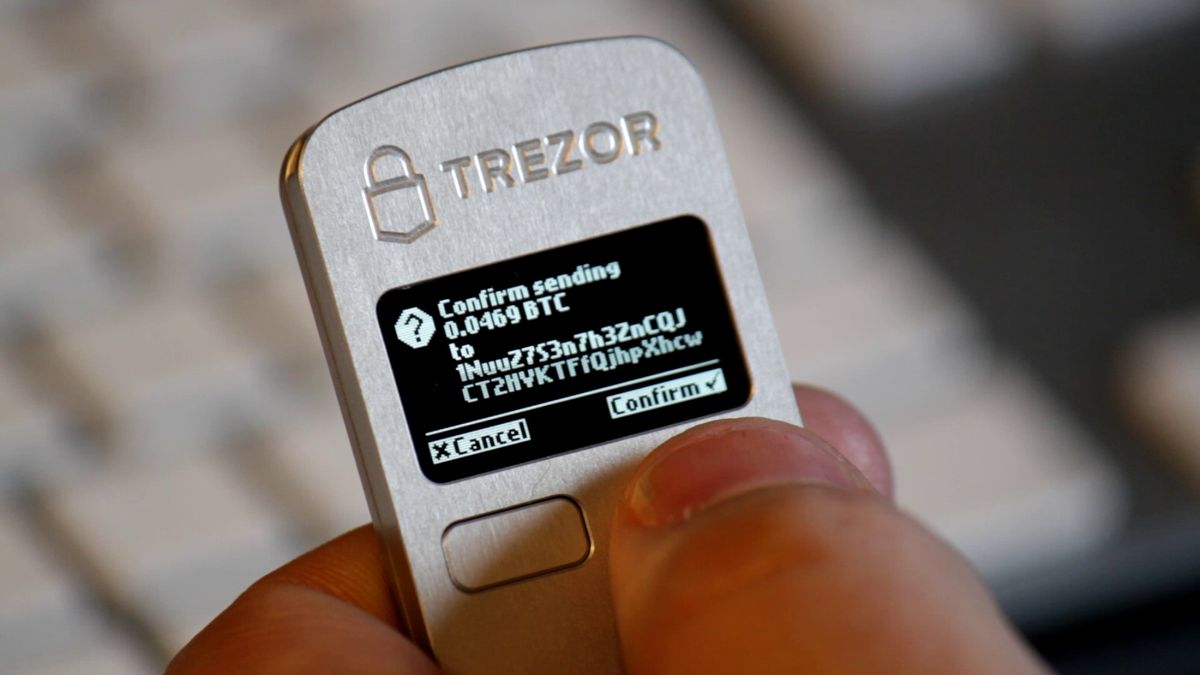Setting up a crypto wallet might seem intimidating if you’re new to crypto, but it only takes a few minutes. In this step-by-step guide, we will walk you through the process of creating your very own crypto wallet.
Key Takeaways
- Setting up a software wallet is quick and easy.
- Building your own cryptocurrency offers benefits like fraud risk elimination and transaction anonymity.
- Choosing the right consensus mechanism is crucial for your wallet’s functionality.
- Creating an ETH wallet on Binance allows you to add crypto and access new features.
- Security and privacy are key considerations when setting up a crypto wallet.
Setting Up a Software Wallet
Pick a Wallet App
Choosing the right wallet app is a crucial step in managing your cryptocurrencies. Selecting a wallet with a strong reputation and user-friendly interface is essential. Wallet apps come in various forms, each offering different features and levels of security. Here are some of the top-rated wallet apps as of March 2024:
- Crypto.com DeFi Wallet: 4.8 out of 5 stars
- Guarda: 4.6 out of 5 stars
- Exodus: 4.5 out of 5 stars
- Trust Wallet: 4.4 out of 5 stars
After picking a wallet, the next step is to download it onto your preferred device. Most software wallets are available for both desktop and mobile, providing flexibility in how you access your funds. > Once installed, creating an account is straightforward and typically does not require personal information, but you will need to establish a secure method for access, such as a password or biometric authentication.
Create an Account
After selecting your preferred wallet application, the next step is to create your personal account. This process typically involves navigating to the registration page, whether on a desktop or mobile device, and providing necessary details. Here’s a quick rundown of what you might expect:
- Enter your email address and choose a secure password.
- Provide personal information such as your legal name, address, Social Security number, and date of birth.
- Verify your identity by entering a code sent to your phone and uploading a photo ID.
Remember, your password should be robust and unique. Here’s a guideline for creating a strong password:
- Lower case letters (a-z)
- Upper case letters (A-Z)
- Numbers (0-9)
- Special Characters (!@#$%^&*)
Security is paramount when dealing with cryptocurrencies. Ensure that all the information you provide is accurate and that your password is stored securely. Do not share your login credentials with anyone.
Benefits of Building Your Own Cryptocurrency

Eliminate Fraud Risk
Creating your own cryptocurrency can significantly reduce the risk of fraudulent transactions. Unlike traditional banking systems, where fraud can be a significant issue, cryptocurrencies offer a more secure transaction environment. The blockchain technology underlying most cryptocurrencies ensures that once a transaction is recorded, it cannot be altered, effectively preventing fraud.
- Decentralization: No single point of control, reducing the chances of fraudulent activities.
- Transparency: All transactions are recorded on a public ledger, visible to everyone.
- Immutability: Once a transaction is confirmed, it cannot be reversed or tampered with.
By taking control of your digital assets, you not only gain peace of mind but also contribute to a more secure and trustworthy financial ecosystem.
Transaction Anonymity
One of the most compelling reasons to create your own cryptocurrency is the ability to maintain transaction anonymity. Unlike traditional banking systems, where transactions are tied to your identity, cryptocurrencies operate on the principle that the identities of those performing transactions remain confidential.
- Lower Operational Costs: Cryptocurrencies like Bitcoin offer low transaction fees, making them attractive for users and developers. For instance, the average transaction cost on the Bitcoin network was as low as $8.07 on March 13, 2024.
- Reduce Fraud Risk: By creating a cryptocurrency, you inherently reduce the risk of fraudulent transactions due to the secure nature of blockchain technology.
Embracing cryptocurrency not only provides anonymity but also opens up a realm of opportunities for businesses to innovate and stay ahead in the digital economy.
Lower Operational Costs
One of the most compelling reasons to create your own cryptocurrency is the potential for lower operational costs. Traditional financial systems are burdened with numerous intermediaries, each adding layers of costs and complexity. In contrast, cryptocurrencies operate on decentralized networks that streamline processes and significantly reduce expenses.
For instance, consider the average transaction cost on the Bitcoin network, which was as low as $8.07 on March 13, 2024. This is indicative of the cost-efficiency that can be achieved with cryptocurrency networks. By eliminating intermediaries, businesses can enjoy a reduction in fees and a more direct relationship with customers.
By developing your own cryptocurrency, you can tailor the operational structure to your business needs, ensuring that costs are kept to a minimum while maximizing profits.
Here’s a quick comparison of transaction costs across different platforms:
| Platform | Average Transaction Cost (as of March 2024) |
|---|---|
| Bitcoin | $8.07 |
| Ethereum | $5.30 |
| Your Coin | Potentially lower |
The table above illustrates the potential savings when operating your own cryptocurrency. It’s clear that the financial benefits are significant and can be a game-changer for businesses looking to innovate and stay competitive.
Immediate Transactions
One of the most compelling advantages of creating your own cryptocurrency is the ability to facilitate immediate transactions. Traditional banking systems often involve delays due to processing times, but with a cryptocurrency, transfers can occur almost instantaneously. This is particularly beneficial for businesses that require a fast-paced transaction environment.
The immediacy of cryptocurrency transactions is not just about speed; it’s about the efficiency and fluidity it brings to financial operations.
Moreover, the absence of intermediaries in the blockchain network means that transactions are not only faster but also incur fewer costs. Here’s a quick comparison of transaction speeds:
- Bitcoin: Average confirmation time of 10 minutes
- Ethereum: Can be as quick as 15 seconds
- Custom Cryptocurrency: Potentially instantaneous, depending on the network design
This speed of transactions is a game-changer for many industries, especially those that rely on quick settlement times to maintain their competitive edge.
Access to New Customer Base
Creating your own cryptocurrency opens the door to a new customer base that is tech-savvy and values innovation. This demographic is often looking for the latest advancements in technology and finance, and by offering a unique crypto solution, you can attract these forward-thinking individuals.
- Understand wallet types: Different wallets cater to different needs. Hardware wallets offer security, while mobile wallets offer convenience.
- Enhance security: Implement robust security measures to protect user assets.
- Use recovery services: Ensure that there are mechanisms in place for account recovery.
- Manage risks: Educate users on how to manage their investment risks.
- Future-proof portfolio: Stay updated with trends and innovations to keep the wallet relevant.
By tapping into this market, businesses not only diversify their customer base but also position themselves at the forefront of financial technology. Embracing crypto can signal to potential customers that your business is adaptable and ready to meet the demands of the digital age.
Security for Funds
Ensuring the security of funds is paramount when creating your own crypto wallet. The ability to control your private keys is a fundamental advantage of using a non-custodial wallet, as it reduces the risk of unauthorized access and theft. However, this also means that the responsibility for security rests entirely on the user.
It’s crucial to implement robust security measures to protect your assets. This includes using strong, unique passwords, enabling two-factor authentication, and regularly updating your wallet software to patch any vulnerabilities.
Here are some best practices for maintaining the security of your funds:
- Regularly back up your wallet, including the seed phrase.
- Never share your private keys or seed phrase with anyone.
- Be cautious of phishing attempts and only download wallet software from official sources.
- Consider using a hardware wallet for an added layer of security, especially for large amounts of cryptocurrency.
Choosing a Consensus Mechanism

Choose the Type of Wallet
After deciding to create a cryptocurrency wallet, one of the first decisions you’ll need to make is choosing the type of wallet that best suits your needs. The choice between a software (hot) wallet and a hardware (cold) wallet is crucial as it will determine the level of security and convenience for your crypto assets.
Software wallets are typically free and offer ease of use with features like staking and lending. They are internet-connected and store your crypto on your own device. Here’s a quick guide to setting up a software wallet:
- Download a wallet app on your desktop or mobile device.
- Create an account with minimal personal information required.
- Set up a security method, such as a password or biometric authentication.
Hardware wallets, on the other hand, provide enhanced security by storing your keys on a physical device. They range in price from $50 to $250 and may require a more complex setup process. To use a hardware wallet:
- Purchase the device.
- Connect it to your computer or phone via USB, WiFi, or QR code.
- Follow the instructions to secure your wallet with a recovery phrase.
Remember, the steps for setting up your wallet will vary based on the type you choose, so it’s important to follow the specific instructions provided with your chosen wallet.
Sign Up for an Account
After choosing your preferred cryptocurrency exchange or wallet service, the next step is to create your account. This process typically involves entering your email address and selecting a strong password. Remember, the security of your account is paramount, so ensure your password includes a mix of lower case letters, upper case letters, numbers, and special characters.
It’s crucial to secure your account with two-factor authentication (2FA) to add an extra layer of security. This will help protect your account even if your password is compromised.
Once your account is set up, you’ll need to verify your identity. This usually requires submitting personal details such as your legal name, address, and date of birth, along with a photo ID. Some platforms may also ask for a phone number to send a verification code.
Finally, once your account is verified, you can deposit funds and start trading or managing your digital assets. Always exercise caution when transferring funds and be aware of the security measures in place on the exchange you choose.
Creating an ETH Wallet on Binance

Add Crypto to Your Wallet
Once you have your ETH wallet set up on Binance, the next step is to add crypto to your wallet. This can be done in several ways:
- By transferring tokens from another wallet to your Binance wallet address.
- By purchasing cryptocurrency directly on the Binance exchange using various payment methods such as ACH, wire transfer, or debit/credit cards.
- By linking your account to an exchange within the app settings, which may require additional verification steps.
Remember, the method you choose may involve different fees and processing times. It’s important to review these details before proceeding to ensure you’re making the most cost-effective and timely transactions.
Adding funds to your wallet is a critical step in engaging with the crypto ecosystem, whether for trading, investing, or making transactions. Ensure that your security features, including your recovery phrase, are properly set up to protect your assets.
Conclusion
Congratulations on successfully creating your very own cryptocurrency! By following this detailed step-by-step guide, you’ve taken an exciting step into the world of crypto innovation. Remember, marketing and community engagement are essential for the success of your project. Utilize social media platforms, engage with influencers, and continue building a strong community around your coin. With creativity and perseverance, the sky’s the limit for your cryptocurrency venture. Best of luck on your journey to crypto success!
Frequently Asked Questions
Is setting up a software wallet difficult for beginners?
Setting up a software wallet is not difficult for beginners, as it only takes a few minutes and does not require personal information input.
What are the benefits of building your own cryptocurrency?
The benefits include eliminating fraud risk, transaction anonymity, lower operational costs, immediate transactions, access to a new customer base, and security for funds.
How do I choose the type of wallet that works best for me?
You can choose the type of wallet based on your preferences and needs, such as software wallets, hardware wallets, or custodial wallets.
What is a consensus mechanism in cryptocurrency?
A consensus mechanism is a protocol used to achieve an agreement on a single data value among distributed processes or systems.
How can I create an ETH wallet on Binance?
You can create an ETH wallet on Binance by following the step-by-step guide provided on their website or smartphone app.
How do I add crypto to my wallet on Binance?
You can add crypto to your wallet on Binance by transferring tokens from another wallet or linking your account to an exchange in the app settings.





